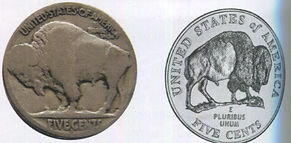Communicating through Graphic Design
Chapter 1: Design is All Around You
In nature, you can see design in the patterns of animals and plants, organic and inorganic life. The design of a natural object means the way its parts are put together. Think of the symmetrical points of a snowflake, the precise square corners of an iron oxide crystal, the leaves and hairs of a Venus fly trap. They are all natural designs. Even microscopic plant and animal forms contain a design or pattern. The design of organisms helps them survive in an environment.
Human-made objects also have designs. The coins in your pocket, the zipper or buttons on your clothing, and the cup you drink from have all been designed by another human being. That person, a professional designer, decided how the object's parts would look and function.
Whether a design is part of nature or made by humans, it represents a kind of adaptation. Designs in nature change slowly, generally in response to threats to an organism's survival. Human designs are shaped by circumstances too, but they're also changed by a unique and powerful force: the human imagination.
Although the earliest human designs were relatively simple, functional style objects — clothing, tools and utensils — people gradually imagined things that were more than merely useful. They began to alter established designs, adapting them to newly available materials and skills.
READING LINKS:
-
A Brief History


1-02: Some natural forms echo human-made objects. (Harold E. Edgerton, Milk Splash, 1958. Dye transfer print)
1-03: What similarities do you see between the milk droplet photo and this logo? How are they different?
(Les Crown logo)

1-04: Notice how the paper company logo (left) reflects the natural forms of an actual thistle (right). (Strathmore Writing & Script Logo (left))

1-05: How did the Buffalo nickel’s design change between 1913 and 2005? Left: Buffalo Nickel (Indian Head) US Currency, 1913. Right: Jamie Franki (designer), “American Bison” Nickel, first design 2005